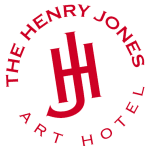Tracey Cockburn
Tracey Cockburn’s practice has developed from a background in printmaking and earlier training in design. She completed a Bachelor of Design (Product Design) in South Australia in 1985. In 2005 she graduated with a Masters of Fine Arts degree in printmaking from the University of Tasmania School of Art and works at Clarence City Council as the Arts and Cultural Development Coordinator, previously teaching printmaking at TAFE and UTAS. She has exhibited widely in Australia and New Zealand with solo shows in Hobart, Canberra and Dunedin, New Zealand and has received several prizes and commissions including the City of Hobart Art Prize in 2006, City of Burnie TASART prize in 2003 and an Art for Public Buildings Scheme Commission from Arts Tasmania in 2001.
Over the years she has explored a variety of media and techniques stemming from traditional printmaking processes and including digital imaging, paper construction and printing on a variety of substrates whilst challenging the notion of the traditional framed print with large scale installation style works.
Cockburn’s work deals with the ruin, a concept which she considers has the power to evoke memories and to allow the invention of a new set of possible histories, and in doing so suggest a broader, more universal picture of the past. As it is rare that a complete factual history of a site or people exists, we are compelled to construct a history or set of possible histories ourselves, to find a way to fabricate it from the fragments of items now in our possession.
‘Ruin’ is not static in the temporal sense, as it is not fixed in time. Not only is it subject to continual decay, but also it is transformed by the very act of digging it up. Through the process of excavation, a site ceases to belong exclusively to the past but is brought immediately into the present.
The works have evolved from an investigation into the idea that the ordinary or undistinguished history of a place is as important, if not more so, than that which is normally deemed significant. Cockburn’s considerations include the value of objects as signifiers of past events and the possibility that material traces from the past can provide the means by which we can recover immaterial historical possibilities. Her imagery is derived from small fragments of imported nineteenth century crockery unearthed from the site in Hobart where she recently built a house. It is likely that these fragments were simply part of the household refuse from a substantial colonial property that now no longer exists. By examining the relics from the site she is attempting to recover and reconstruct the possible history of the place and suggest a personal history that may or may not be real.
My practice has been repeatedly focused on crockery fragments, textiles, wallpaper patterns; the neglected artefacts of the domestic and our mundane existences. These items are ubiquitous and yet so often overlooked or written out of history. They exist in the background or on the periphery of our consciousness. They have fallen into a state of oblivion.
– Tracey Cockburn
